
The easiest way to compare the defence forces of two countries is to do the bean count of the weapons and equipment that they have. But that gives only one aspect of their capability. The numbers do make up for some strength, particularly when a war of attrition takes its toll on the weapons and equipment of a country. But that alone cannot win wars. If that was the case, the more advanced countries should be winning the wars easily. That has not been the trend. There are many imponderables like training, battle experience, technology absorption, and ability of commanders to clearly read the battle and employ forces that impact the outcome of wars. When comparing the defence forces of India and China, one should consider all these factors.
BATTLE EXPERIENCE
The People's Liberation Army fought its last war in 1979 against Vietnam. Therefore, many analysts feel that the PLA lacks combat experience. However, my experience of dealing with the PLA on the Line of Actual Control for many years is that the PLA learns fast, and is willing to learn from everybody. It studies the campaigns fought by other countries and takes out lessons for itself. It also tries to train hard.
In contrast, the Indian armed forces are adept in both conventional and counterinsurgency operations. The near normalcy in northeast India and the improving ground situation in Jammu and Kashmir are testimony to that. Similarly, the Kargil War in 1999 proved the mettle of India's defence forces. India also studies the campaigns being fought by other countries and takes lessons from them. The Indian armed forces are at an advantage in this aspect.
TRAINING
この記事は THE WEEK India の July 21, 2024 版に掲載されています。
7 日間の Magzter GOLD 無料トライアルを開始して、何千もの厳選されたプレミアム ストーリー、9,000 以上の雑誌や新聞にアクセスしてください。
すでに購読者です ? サインイン
この記事は THE WEEK India の July 21, 2024 版に掲載されています。
7 日間の Magzter GOLD 無料トライアルを開始して、何千もの厳選されたプレミアム ストーリー、9,000 以上の雑誌や新聞にアクセスしてください。
すでに購読者です? サインイン
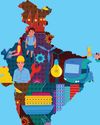
Forging the future
As the curtain falls on 2024, I take pride in the extraordinary milestones achieved under the leadership of Prime Minister Narendra Modi. This year stands as a testament to the Modi government's resolve to forge a resilient and forward-looking Bharat. From groundbreaking advancements in infrastructure to visionary global initiatives, these efforts resonate deeply with the vision of Viksit Bharat.
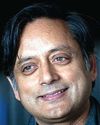
Our strange democracy
Abraham Lincoln is lauded as among the very best presidents the US ever had: the statesman par excellence successfully steered the nation through the devastating and perilous years of the American civil war. Not only did Lincoln manage to keep his country united, he also ensured the passage of the 13th amendment to the US constitution, which abolished slavery.

Five years of post-pandemic fashion
It has been five years since we discovered what Covid-19 was, and five years since it disrupted the world forever. The World Health Organization activated their emergency systems on January 1, 2020, and informed the world by January 4, 2020. By the end of that week, they had set guidelines for various countries to follow. Comparable to the Spanish flu of 1918, more than 7 million people have died of Covid according to official data. Unofficially, no one has an idea. WHO has just this week asked China to provide critical data to understand the virus's origins as a “moral and scientific imperative”.
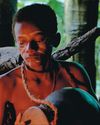
Community spirit
Rhythm of Dammam opens a window to the world of African-origin Siddis of Uttara Kannada
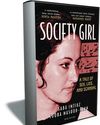
'Breaking' down a scandal
Society Girl is not just a case study of a high-profile death in Pakistan but also a stark commentary on media trials
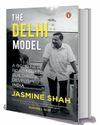
Progress card
Jasmine Shah's book tells you what the AAP has achieved in Delhi in the last 10 years
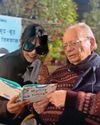
SENSE IN NONSENSE
In his latest book of poetry, Ruskin Bond is at his funniest

Get ready for Trump bump
The ‘butterfly effect’ is a beautiful, mysterious metaphor of the planet’s interconnectedness.

QUIET FLOWS THE FAITH
The melding of an ancient amorphous faith and the latest science; of an antique tradition and new practices; ways of life older than memory and new expressions is happening at Prayagraj in Uttar Pradesh.

Trash to treasure
How a weed-choked Dal Lake spurred Maninder Singh's journey to become a waste management visionary